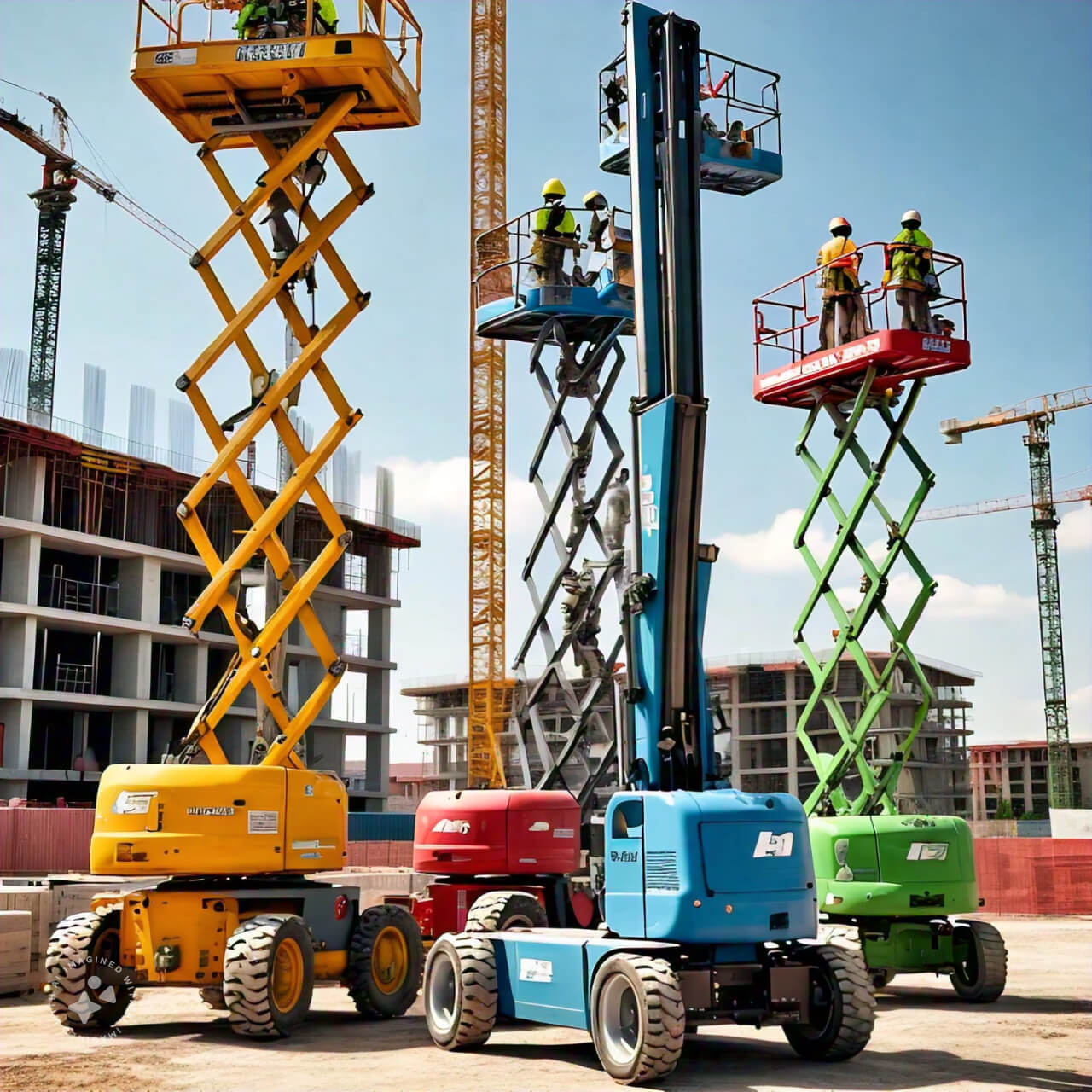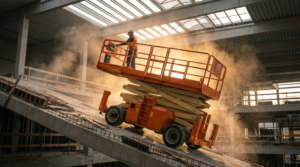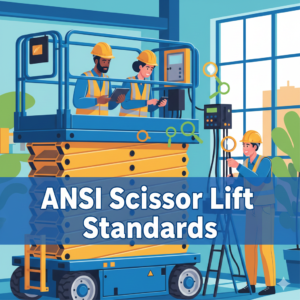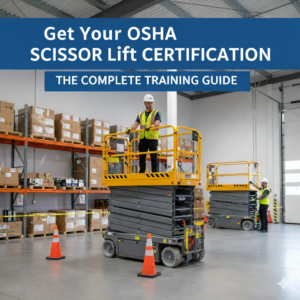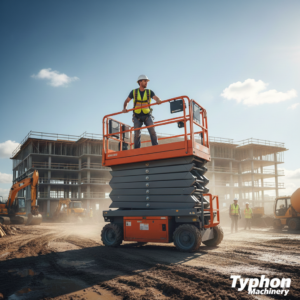Many different businesses use scissor lifts in regular sight. Among other uses, they find application in building, storage, and facility maintenance.
But their usage carries responsibility. a duty to guarantee security.
Safety of scissor Lifts is absolutely essential to avert workplace mishaps. It goes beyond merely running the machinery as proper. It also relates to knowing the inherent hazards and how to reduce them.
This page seeks to clarify the safety features of scissor lifts. We will discuss the need of appropriate training, the main safety aspects of these devices, and how to design a safe workplace around them.
This guidance is for you regardless of your job—construction worker, safety manager, or someone supervising scissor lift operation.
Let’s start this trip of knowledge on scissor lift safety. Let’s make our offices safer.
The Role of Scissor Lifts in Industry
Versatile tools for raising personnel and equipment are scissor lifts. They provide a quick and safe way to fly high.
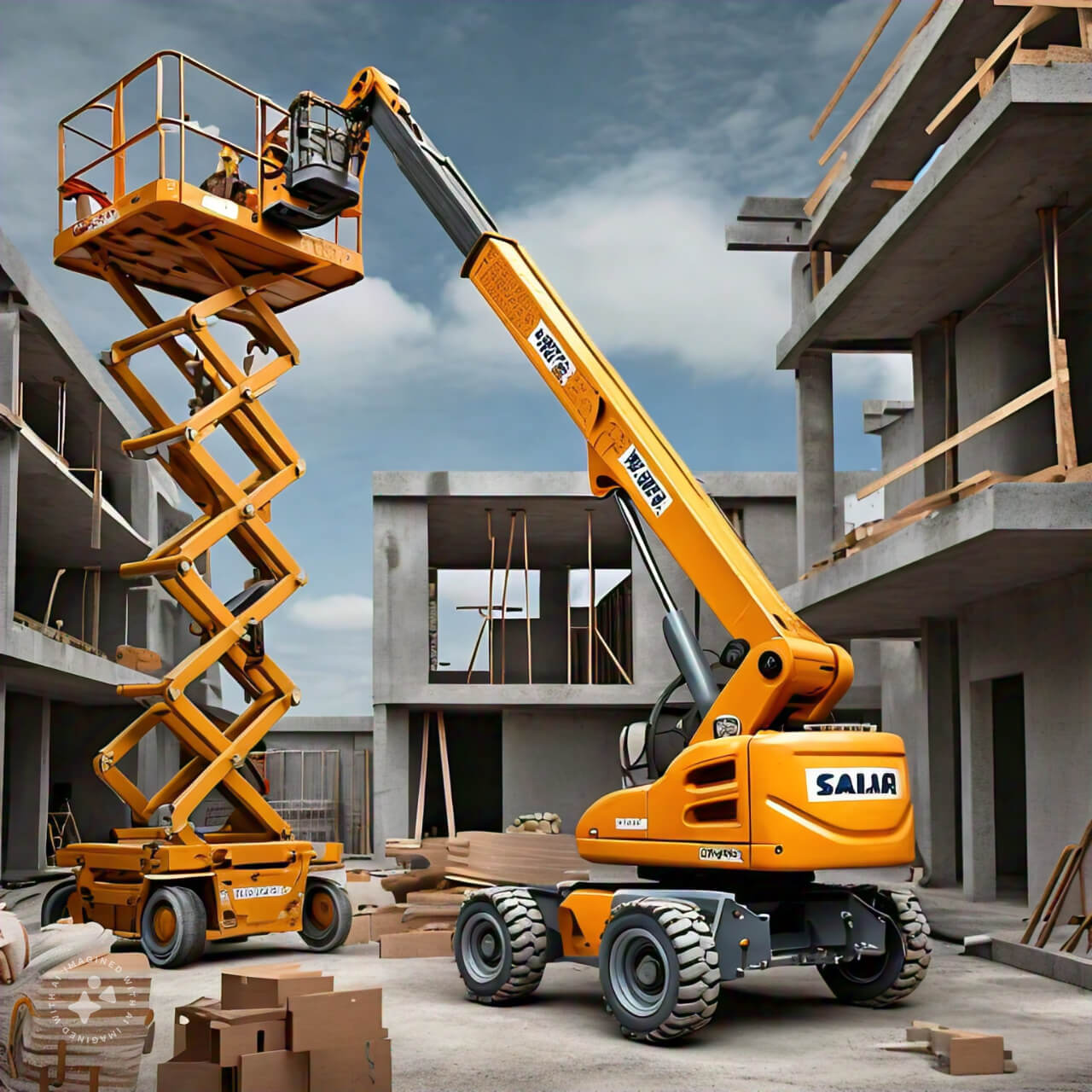
Many different fields find these lifts very prevalent. In maintenance, storage, and construction they are absolutely necessary. Here are some typical applications:
- Getting to high shelves in warehouses
- Encouraging building at higher altitudes
- Doing repairs and upkeep on ceilings
- helping with installations in big buildings
Safety in scissor lift operations is the first concern. Severe injuries or even death could follow from accidents. Making sure correct safety precautions shields operators as well as those close by.
Moreover, a concentration on safety helps to increase output. Safe operations reduce accident-induced downtime. Better general working efficiency can follow from this as well.
Knowing their uses and responsibilities helps one to appreciate scissors lifts. Furthermore, it emphasizes the importance of prioritizing safety. In every sector, scissor lifts may be safe and efficient instruments, depending on the correct procedures.
Recognizing Scissor Lift Hazards
While useful, scissor lifts carry some risk. Promoting safety depends on one knowing these hazards. Operators have to see possible hazards in their workplace.
One of the common risks connected to scissor lifts is height falls. Other hazards include collapsing lifts and coming into touch with above objects. Workers must always remain constantly conscious of their surroundings.
Many times, bad operating methods lead to accidents. Uneven ground or overloading the platform could cause instability. Strong winds or poor weather could create further risks.
Let’s look at some statistics:
- Falls are the most frequent accidents involving scissor lifts.
- Most incidents result from bypassing safety protocols.
- Many injuries stem from mechanical failures due to lack of maintenance.
These figures highlight the need of alerting safety precautions. Following rules and regular training assist to avoid these mishaps. Making investments in a safe workplace lowers expenses as well as injuries.
Acknowledging these risks will help businesses to develop sensible safety plans. Crucially, awareness and education are Constant training will help employees to update their knowledge and abilities.
Key Safety Features of Scissor Lifts
Essential safety elements abound on scissor lifts. These characteristics are meant to shield operators in usage. Knowing these components helps to improve safe operations.
Among the most important safety devices are guardrails. They provide a physical barrier surrounding the platform, therefore preventing falls. Guardrails used properly greatly lower fall hazards.
The emergency stop button is another really important element. This button lets operators stop activities in hazardous conditions fast. Accessible emergency stops help to increase reaction times to possible threats.
Here are some key safety features of scissor lifts:
- Guardrails for fall prevention
- Emergency stop buttons for immediate halting
- Stability sensors to detect uneven terrain
- Safety interlocks to control unauthorized use
Regular maintenance guarantees proper operation of these functionalities. Planned visits find wear and tear before it causes problems. Reliability of equipment depends critically on a proactive maintenance schedule.
Ignoring maintenance might turn off safety features. Worn-out guardrails or broken buttons compromise operator safety. Frequent inspections and maintenance help to keep compliance and stop mishaps.
One of excellent practices is including regular inspections into everyday activities. A lift kept in good condition keeps operators safe and operations free. By preventing mishaps and downtime, maintenance investments finally help to save expenses.
Scissor Lift Safety Protocols
Using scissor lifts calls for applying safety procedures. These rules guard operators and assist to avoid mishaps. Knowing and using these procedures guarantees a better workplace safety.
Precision is essential both when raising and lowering scissor lifts. Operators should track the speed and movement of the lift very attentively. Deliberate, slow motions reduce the chance of toppling over.
Another essential component is load control. Specific weight restrictions on scissor lifts should never be broken. Equally distributing weight across the platform preserves stability.
Scissor lift operators absolutely must have personal protective equipment (PPE). Further protection comes from helmets, harnesses, and non-slip shoes. Always don PPE to lower your chance of damage should an accident occur.
Likewise vital are safe entrance and departure policies. Approaching a scissor lift slowly reduces slip risks. Stepping onto the platform using handrails increases stability.
Here are some essential scissor lift safety protocols:
- Monitor lift speed and movement during operation
- Never exceed the weight limit of the platform
- Always wear appropriate PPE
- Use handrails for stability when entering/exiting
Workers really must communicate clearly. Team members should keep current with any dangers and lift operations. Good communication prevents mistakes and misinterpretation.
Following these standards calls for constant education. Frequent safety courses maintain operators current on best practices. Maintaining a safety-first perspective at work depends on ongoing education.
Following these standards helps the workplace to be safer. Following them protects onlookers as well as operators. The well-being of everyone depends on a culture of safety.
The Impact of Weather and Environment on Scissor Lift Safety
Operations of scissor lift depend much on the weather. Snow, rain, and wind provide special difficulties. Use of safe equipment depends on an awareness of these elements.
Strong gusts can throw scissor lifts off-balance. This risk increases with height. Local wind speed norms should be known to operators, so they should refrain from using them on windy days.
Rainy wet surfaces could cause falls and slips. On smooth surfaces, operators have to be careful and act preventatively. When at all feasible, keeping the work space dry lowers these risks.
A safe workplace around scissor lifts is really vital. Before starting activities, clean the area of trash and hazards. This exercise increases safety and helps to reduce tripping hazards.
Always evaluate environmental elements and weather before using a lift. These situations might change rapidly and need for operators to stay aware. By means of proactive preparation for weather-related hazards, general safety and efficiency improve.
The Importance of Scissor Lift Training
Operator safety depends critically on training in scissor lifts. Effective training improves operational efficiency and helps to lower mistakes. Trained operators are more sure of safety procedures and conscious of them.
Training programs provide advantages outside of only safety. They raise equipment lifetime and production. Well-trained personnel can spot any problems early on, therefore saving expensive repairs.
Additionally emphasized in training is proper equipment handling. This covers knowing scissor lift physics and applying controls with effectiveness. Knowledgeable operators make more effective use of elevators.
One must first comply with legal standards. Regulatory authorities set certain training guidelines. By meeting these, one can prevent possible penalties and legal difficulties.
Starting a safety-first culture starts with education. It fosters a proactive attitude to occupational safety. This dedication to safety speaks well of company reputation.
Key Aspects of Training Programs:
- Understanding equipment limitations and capabilities
- Recognizing and avoiding potential hazards
- Proper use of personal protective equipment (PPE)
- Emergency procedures and response plans
Training promotes an always improving culture. Frequent refresher training maintain operators’ best practice knowledge current. This promotes awareness and helps to minimize complacency.
Funding thorough training initiatives helps everyone. It improves safety, morale, and a working environment’s productivity. Constant training for its workers should be first priority for companies.
Responding to Emergencies and Malfunctions
Emergencies may strike even with the best of care. One needs to be ready with strong processes. The emergency response schemes should be familiar to every operator.
Many times, rescue missions call for fast judgments. A well defined strategy guarantees everyone’s responsibility. Regular drills could help to improve efficiency and preparedness.
Problems can cause hazardous conditions. Fast identification of problems is really essential. Operators should be taught to spot warning indicators of equipment breakdown.
Fixing problems calls for a cool, deliberate attitude. First, should it be required, power the unit down. Assess the matter then with safety as your first concern.
Under an emergency, good communication is really vital. Tell those around right away. Timeliness of information guarantees prompt reactions and helps to avert mishaps.
Comprehensive emergency plans help businesses to create safer surroundings. Constant learning and following safety guidelines help to foster a ready culture. By being proactive, one reduces dangers and safeguards all those engaged.
Adhering to Legal Standards and Manufacturer Guidelines
Scissor lift operations depend critically on legal standard compliance. Government departments create rules meant to guarantee security. Ignoring rules might lead to fines of great severity and more risk.
Maintaining teams informed calls for regular updates and training courses. Understanding of standards guarantees that activities fall outside legal limits. It also underlines a society of accountability and safety.
Not less crucial is following manufacturer recommendations. These rules offer particular directions on safe equipment running. Knowing these guidelines reduces the possibility of abuse or injury.
Manufacturers also provide maintenance schedules required for safe running. Following these schedules helps the equipment last longer. Regular maintenance visits preserve operating safety by helping to spot problems before they become more serious.
All things considered, it is not negotiable to grasp and follow legislation as well as manufacturer guidelines. These rules exist to increase workplace safety and safeguard operators. Dedication to these methods creates a compliant and safe workplace.
Leveraging Technology for Enhanced Scissor Lift Safety
Safety of scissor lift depends much on technological developments. Advanced safety measures abound in modern scissor lifts. These developments improve operating performance and assist to avoid mishaps.
Common features include tilt sensors and safety interlocks. They let operators know about possible risks, therefore lowering their chance of mistakes. Technology guarantees better and safer lift operations in many different surroundings.
Looking forward, there is great possibility for even more improvement. Constant innovation seems to produce even more clever safety measures. This series seeks to guarantee that scissor lifts remain safe and easy to operate.
Conclusion: Integrating Scissor Lift Safety into Workplace Culture
Preventing industrial injuries depends on scissor lift safety. Giving safety first priority helps us to safeguard employees and preserve output. Safety has to be seen by companies as a basic component of their business.
Maintaining safety standards depends on ongoing improvement and education. Updated procedures and consistent training help to guarantee staff’ continued understanding. Encouragement of education helps to create an occupational safety culture.
Beyond mere compliance, commitment to scissor lift safety promotes a healthy workplace. Incorporating safety measures helps businesses demonstrate their respect of the welfare of their staff. In the end, this strategy produces a more unified and capable workforce.
Additional Resources
See these materials for more study on scissor lift safety and training. They give insightful analysis and direction to improve your knowledge and abilities.
- Occupational Safety and Health Administration (OSHA) guidelines
- Scissor lift safety training programs offered by certified providers
- Industry-specific safety manuals and publications

